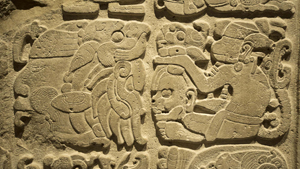
The Second Moment of Creation (2018)
In April of 2018, PBS, in partnership with the BBC, premiered a new, nine-part series called "Civilizations," the theme of which is to "examine the formative role of art and the creative imagination in the forging of humanity itself." The one-hour episodes include "What is Art Good For?," "God and Art," and "The Cult of Progress," which I reviewed earlier for JWJ. Other episodes consider "Paradise on Earth" (depictions of nature) and "How Do We Look?" (the human body in art). I love the title for this very first episode, "The Second Moment of Creation." It suggests the need or urge for human beings to co-create, to express themselves in objects, images, and architecture in ways that far transcend mere subsistence. And this is just what we find where the film begins, in a cave in South Africa, where archaeologists have found a large abalone shell that's decorated with red ocher pigment. The shell is about 100,000 years old. The film then moves to the cave art in Castillo, Spain, that's 40,000 years old. The narrative proceeds to the founding of cities like Ur about 7,000 years ago, by which time the art and architecture is extraordinarily advanced, and then not just cities but civilizations — like the Mayans, which is where the film concludes. When we consider the time and labor that was invested in the earliest art, and how society freed the artists from the normal obligations and constraints of subsistence and survival, we glimpse how essential art was to their understanding of a full and meaningful life. I watched this film from the PBS website.


